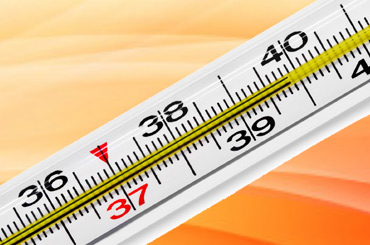Hyperthermia (fever therapy)
Meeting suffering and illness with heat
Hyperthermia (fever therapy) shows that empirical medicine and high-tech procedures can be combined. As early as 2,400 BC, Egyptian doctors used artificially generated fever on their patients. Parmenides (540 – 480 B.C.), a Greek doctor and philosopher, recorded the saying: “Give me the power to create fever and I will cure any illness”. Over the centuries, actively generated fever has been used to treat a wide range of diseases and the physician Julius Wagner von Jauregg was awarded the Nobel Prize for Medicine in 1927 for his research into hyperthermia. However, as with many other procedures, hyperthermia lost its importance for several decades with the triumphant advance of antibiotics.
Hyperthermia is often used in cancer therapy, but it can also be used as a therapy for autoimmune diseases such as rheumatism to balance an overly aggressive or weak immune system. Here hyperthermia causes an intensive blood circulation, the purification of the organism and an improvement of the oxygen supply as well as a lasting stabilisation of the immune system.
Today, a fundamental distinction is made between passive and active hyperthermia, with numerous variants of treatment forms: In passive hyperthermia, the patient is heated locally for a certain time with filtered infrared radiation from outside. Very high temperatures can be reached or a local heating of the tumor area with short waves is performed. In active hyperthermia, the patient receives bacterial lysates, which cause the organism to produce fever by itself for some time.
In both procedures, the body activates strong self-healing powers through the increased temperature and increases its immune defence systems. As a result of the fever, the tumor tissue is supplied with increased blood flow, so that, for example, radiation or chemotherapeutic agents can be administered in lower doses and more precisely targeted into the tumor tissue in this phase. Repair enzymes, which normally protect the cancer cells from radiotherapeutic agents, lose their function due to the heat. If these important enzymes are damaged, the tumour cells die at small doses and even previously resistant cancer cells are eliminated. The heat also affects certain proteins that normally help tumour cells to discharge cytostatic drugs. If these pump proteins are inactive, chemoresistant cancer cells also die.
We perform active hyperthermia or also fever therapy.
Hyperthermia can be used for the following types of cancer, among others:
- Pancreatic cancer (pancreatic carcinoma)
- Lung tumours, especially pleural mesothelioma
- Bladder cancer
- cancer of the stomach, colon and rectum
- Ovarian Cancer
- Breast cancer
- Uterine cancer
- Sarcomas
- Brain Tumours
- Esophageal cancer
- Bone metastases
- Tumours in the ear, nose and throat area
- Liver tumors




